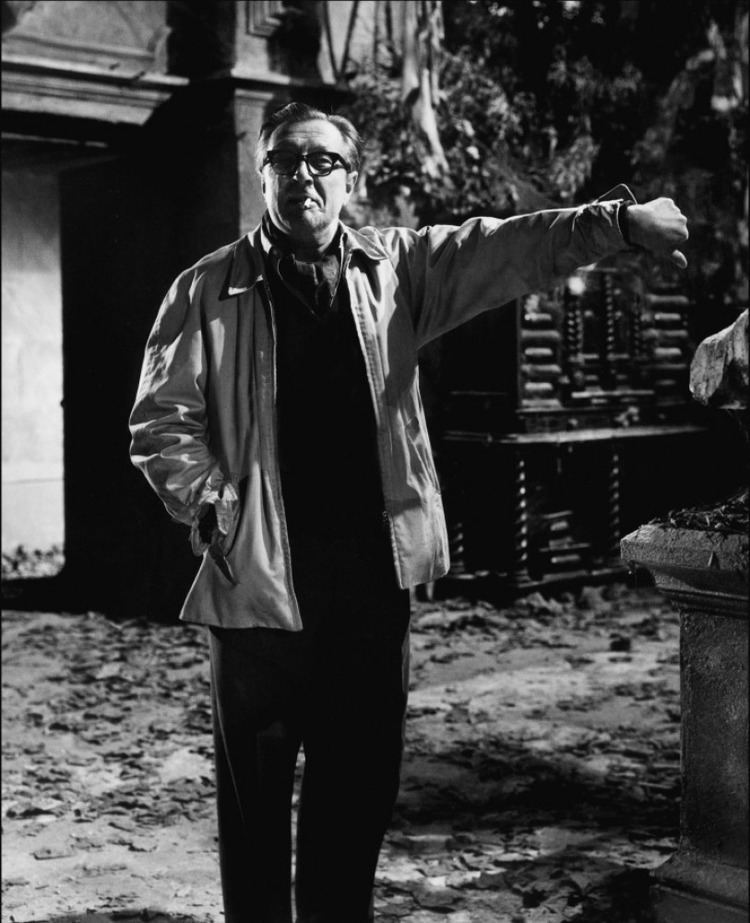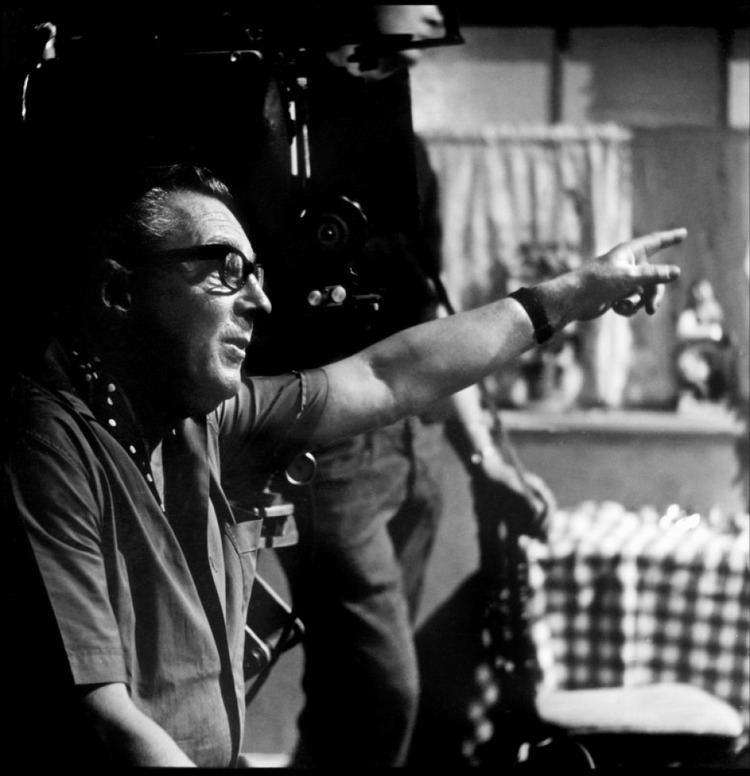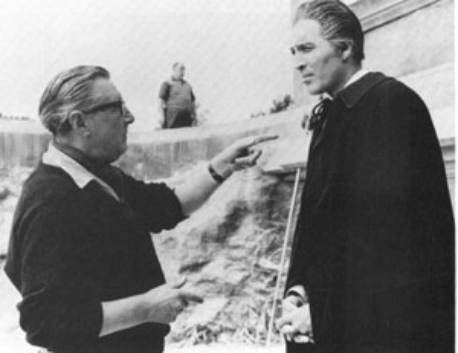Name Terence Fisher | Role Film director | |
 | ||
Occupation Film director, film editor Notable work Nominations Hugo Award for Best SF or Fantasy Movie Movies Dracula, The Curse of Frankenstein, Dracula: Prince of Darkness, The Brides of Dracula, The Mummy Similar People | ||
Patrick hamilton terence fisher
Terence Fisher (23 February 1904 – 18 June 1980) was a British film director who worked for Hammer Films.
Contents
- Patrick hamilton terence fisher
- TERENCE FISHER FILMS
- Biography
- Editor
- Director
- Hammer Films
- The Curse of Frankenstein
- Final Films
- Filmography
- References

Fisher was one of the most prominent horror directors of the second half of the 20th century. He was the first to bring gothic horror alive in full colour, and the sexual overtones and explicit horror in his films, while mild by modern standards, were unprecedented in his day. His first major gothic horror film was The Curse of Frankenstein (1957), which launched Hammer's long association with the genre and made British actors Peter Cushing and Christopher Lee leading horror stars of the era. He went on to film a number of adaptations of classic horror subjects, including Dracula (1958), The Hound of the Baskervilles (1959) and The Mummy (1959).

Given their subject matter and lurid approach, Fisher's films, though commercially successful, were largely dismissed by critics during his career. It is only in recent years that Fisher has become recognised as an auteur in his own right. His films are characterised by a blend of fairy-tale, myth and sexuality. They may have drawn heavily on Christian themes, and there is usually a hero who defeats the powers of darkness by a combination of faith in God and reason, in contrast to other characters, who are either blindly superstitious or bound by a cold, godless rationalism (as noted by critic Paul Leggett in Terence Fisher: Horror, Myth and Religion, 2001). For a detailed discussion of Fisher's works, see The Charm of Evil: The Films of Terence Fisher by Wheeler Winston Dixon (Metuchen N.J. and London: Scarecrow Press, 1991).

TERENCE FISHER FILMS
Biography

He was born in Maida Vale, a district of London.
Editor
Fisher broke into the film industry as an editor. As Gainsborough Pictures his credits included Tudor Rose (1936) and Jack of All Trades (1936) for Robert Stevenson and Where There's a Will (1936) and Windbag the Sailor (1936) for William Beaudine.
At Warner Bros he edited Mr. Satan (1938), On the Night of the Fire (1939), Atlantic Ferry (1940), The Peterville Diamond (1941), and Flying Fortress (1942). Fisher did Tomorrow We Live (1943) and Candlelight in Algeria (1944) for British Aviation Films, They Met in the Dark (1943) for Marcel Hellman, The Dark Tower (1943) for Warners, and One Exciting Night (1944). Among his final films as editor were The Wicked Lady (1945), one of the most popular British films of all time, and Master of Bankdam (1947).
Director
Fisher's first film as director was A Song for Tomorrow (1948) a second feature for Highbury Productions. For the same company he did Colonel Bogey (1948) and To the Public Danger (1948).
These were low budget films. He moved over to Gainsborough for more prestigious movies: Portrait from Life (1948) with Mai Zetterling; Marry Me! (1949) with Derek Bond; The Astonished Heart (1950) with Noel Coward (replacing Michael Redgrave during filming); So Long at the Fair (1950) with Dirk Bogarde and Jean Simmons.
Fisher returned to supporting features with Home to Danger (1951) for Eros Films.
Hammer Films
Fisher's first feature for Hammer Films was The Last Page (1951), one of a number of low budget thrillers that studio were then making, usually with an imported American star to appear to the US market; The Last Page featured George Brent and Diana Dors. Hammer liked Fisher's work and kept him on for Wings of Danger (1952) with Zachary Scott and Stolen Face (1952) with Paul Henreid and Lizabeth Scott.
After making Distant Trumpet (1952) for Meridian Films, Fisher returned to Hammer for Mantrap (1953) with Henreid; Four Sided Triangle (1953) with Barbara Payton; Spaceways (1953), a science fiction story, with Howard Duff; Blood Orange (1953), a crime film with Tom Conway; Face the Music (1954) with Alex Nicol; Murder by Proxy (1954) with Dane Clark; A Stranger Came Home (1954) with Paulette Goddard.
He made Final Appointment (1954) outside Hammer with John Bentleys then went back to Hammer for Mask of Dust (1954) with Richard Conte. He made a comedy Children Galore (1955) with Eddie Byrne.
Final Appointment led to a sequel Stolen Assignment (1955) and another movie with Bentley, The Flaw (1955). Fisher then made two crime films: The Gelignite Gang (1956) and The Last Man to Hang? (1956).
The Curse of Frankenstein
Fisher's career changed forever when Hammer asked him to direct The Curse of Frankenstein (1957), their first horror colour film. It was a huge success and made stars of Peter Cushing and Christopher Lee, and really established "Hammer horror" as a genre.
Fisher was hired by Renown Pictures to make another crime thriller with an imported American star, Kill Me Tomorrow (1957) with Pat O'Brien (and a cameo from Tommy Steele). Hammer called him back for Dracula (1958), an even bigger hit than Frankenstein.
For the rest of his career, Fisher worked almost exclusively for Hammer. The Revenge of Frankenstein (1958) with Cushing was a sequel to Curse of Frankenstein. The Hound of the Baskervilles (1959), with Cushing, Lee and Andre Morrell, was an adaptation of the famous Sherlock Holmes novel given a Hammer horror slant.
Fisher directed Cushing and Lee in The Mummy (1959). He was meant to be reunited with both in The Man Who Could Cheat Death (1959), a remake of The Man in Half Moon Street (1945), but Cushing dropped out shortly before filming began and was replaced by Anton Diffring.
The Stranglers of Bombay (1959) was a different kind of Hammer horror - a story of the thugee cut in Imperial India starring Guy Rolfe. Fisher then directed a sequel to Dracula, The Brides of Dracula (1960) with Lee and David Peel. The Two Faces of Dr. Jekyll (1960) had Paul Massie in the title role and Lee in support; it was one of the first Hammer horrors to lose money.
Fisher had a complete change of pace for Hammer, directing Sword of Sherwood Forest (1960) with Richard Greene reprising his small screen role as Robin Hood. Oliver Reed was in this and Dr Jekyll and Fisher cast him in the lead of The Curse of the Werewolf (1961).
The Phantom of the Opera (1962) with Herbert Lom was one of Hammer's most expensive films but proved a box office disappointment. A Germany company hired Fisher to make his first movie outside Hammer for a number of years, Sherlock Holmes and the Deadly Necklace (1962), starring Christopher Lee as Sherlock Holmes.
Lippert Pictures used Fisher for The Horror of It All (1963), a horror comedy starring Pat Boone shot in England. Hammer reunited him with Cushing and Lee for The Gorgon (1964) then Lippert used him for The Earth Dies Screaming (1964).
Fisher directed Island of Terror (1966) for Planet Film Productions. Back at Hammer he worked with Lee on Dracula: Prince of Darkness (1966), a big hit and Frankenstein Created Woman (1967) with Cushing.
Plant Films used Fisher, Cushing and Lee on Night of the Big Heat (1967).
Final Films
Fisher and Lee made The Devil Rides Out (1968), a box office disappointment but now very highly regarded.
Fisher's last two films were for Hammer with Cushing: Frankenstein Must Be Destroyed (1970) and Frankenstein and the Monster from Hell (1972).
Filmography
The following is a list of the theatrical films in which Terence Fisher received screen credit. Television productions are not included.
